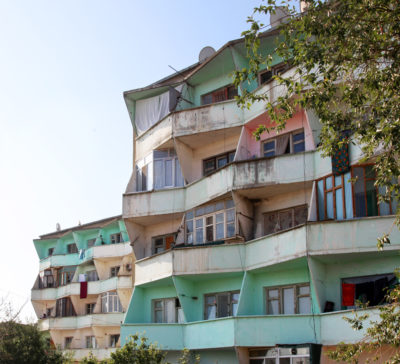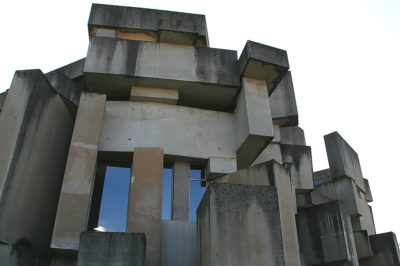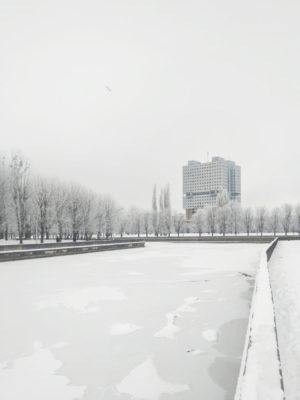Ancient Georgia’s Concrete Marvels
There can’t be many authentic Scottish Pipe Band musicians available for bookings in the ‘stans’. When the British Embassy in Tashkent and Ashgabat came in search of kilted entertainment to mark the Queen’s birthday, Scottish born, London based drummer, Dave Lowe and his accompanying bagpiper stepped forward.
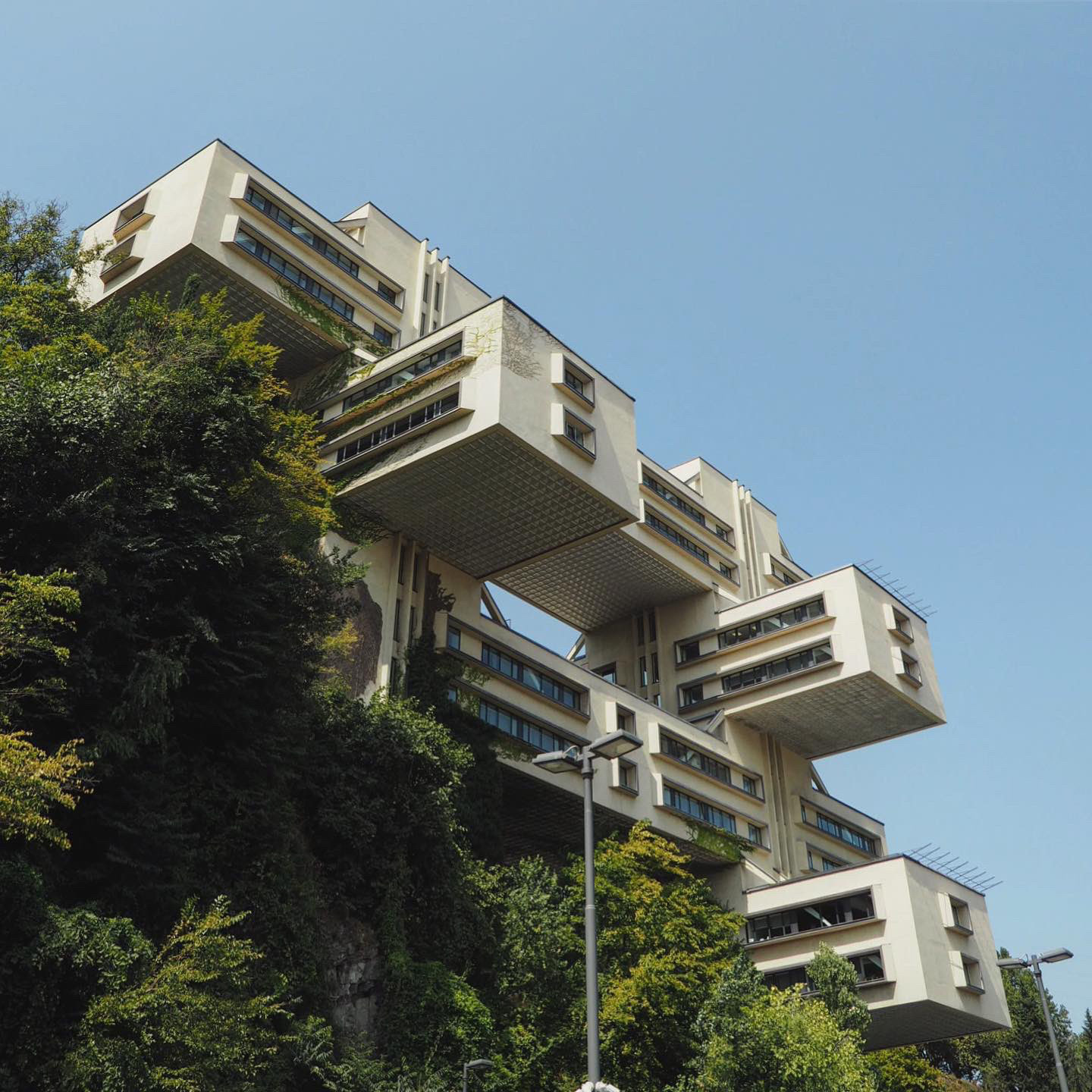 Bank of Georgia Headquarters Image Dave Lowe
Bank of Georgia Headquarters Image Dave Lowe
‘Safe to say the locals had never heard anything like it before. Getting our instruments and kit through airport customs was a memorable experience’.
Have you ever noticed that it doesn’t matter where you are or how remote it is, someone sagely recommends somewhere a minimum of a day’s travel away as a ‘must-see’. Dave had shared that he was keen on photographing bold, soviet-era concrete architecture. That’s how he got pointed onwards towards Georgia in the Caucasus, the cheese in the khachapuri surrounded by Turkey, Russia, Armenia and Azerbaijan.
Dave shares with Greyscape about his recent trip to the capital city, Tbilisi and beyond.
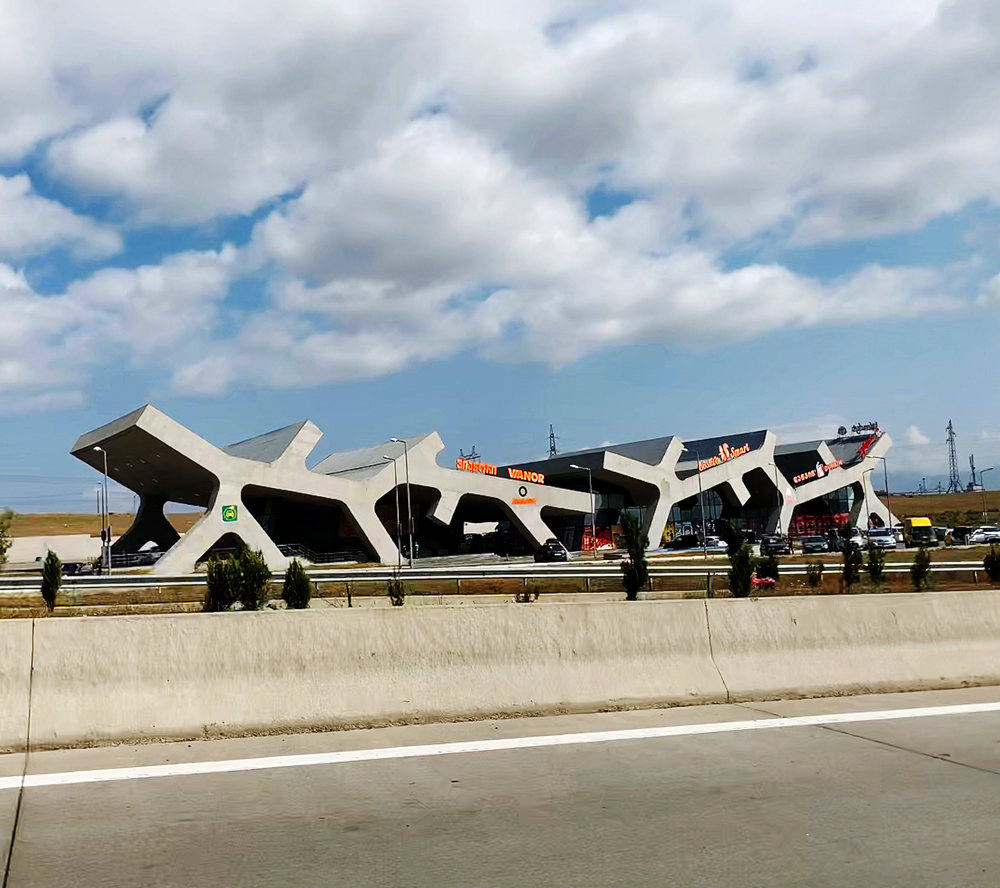
Gori Image Dave Lowe
‘Anybody who has visited the former Soviet Union will know that what you see on the surface often isn’t what you get once you delve more deeply. A building’s nondescript frontage can, in fact, lead to somewhere quite unexpected. Georgia’s capital, Tbilisi, certainly stands testimony to the notion of ‘hidden beauty all around’. Old world mixed up with post-soviet collapse architecture. High-end bars and restaurants in spectacularly ornate courtyards that would not look out of place in Italy. A walk down a cobbled street might just lead to a cool bar hidden in plain sight, behind an unassuming façade (Dave recommends Valiko Bar on Lado Asatiani St in Tbilisi)’.
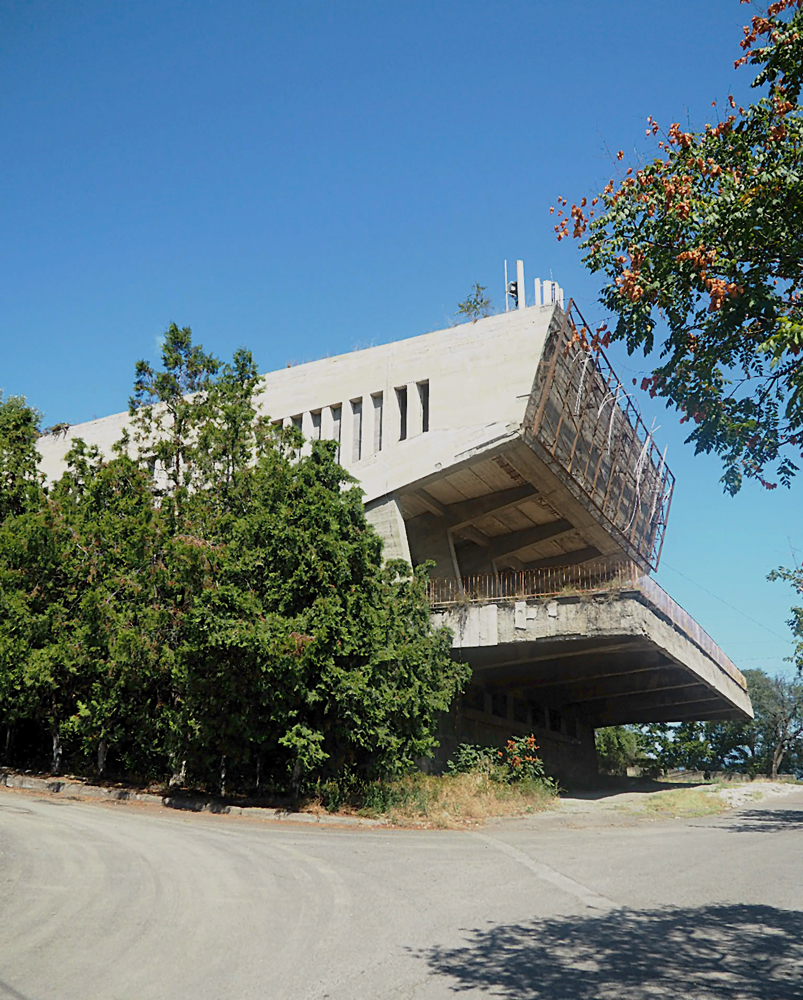
Image Dave Lowe
‘The way buildings are decorated is an assault on the eyes, residential courtyards are organically upgraded by virtue of their colourful balconies. Wooden facades are still in evidence as are the, sometimes hair-raising, unstable staircases.
Exploring on foot throws up a rich array of architectural treasures spanning ancient medieval, Imperial Russian, Soviet and post-independence modern.
Layers of faded beauty from the city’s rich history sit in both perfect and imperfect harmony, and the resourceful nature of its inhabitants ensure that these dwellings are preserved whilst being made full use of.’
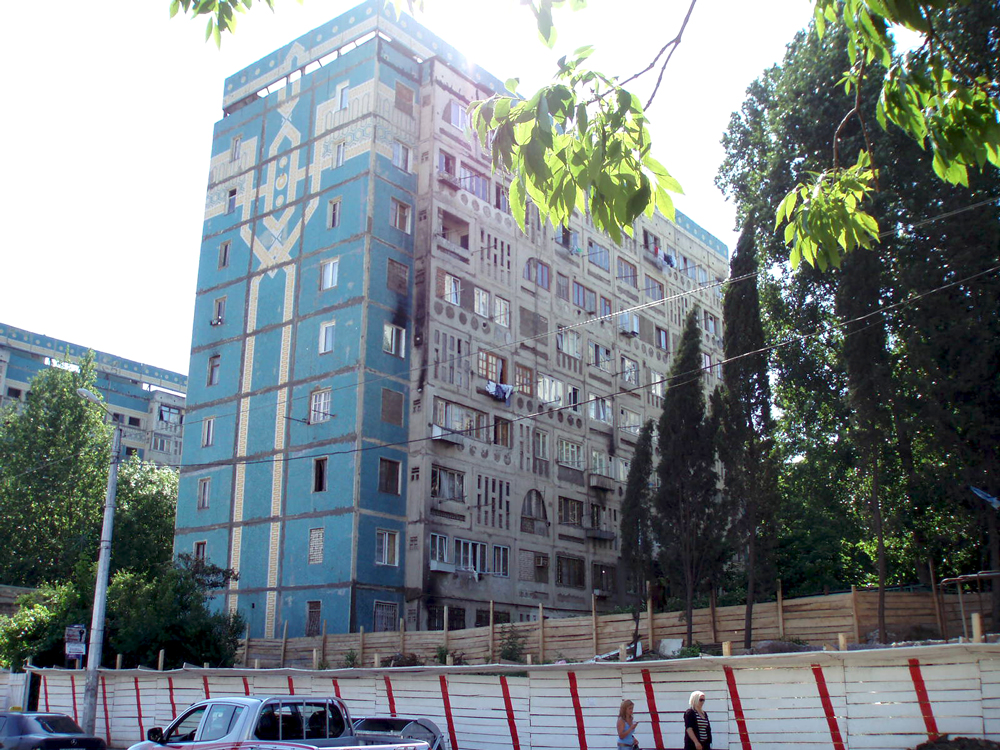
Image David Holt CC BY-SA 2.0
‘We live in the age of Instagram which has had an impact on tourism. Georgians, often curious to hear about what you are getting up to, have found themselves at the receiving end of large swathes of people looking for raw brutalist concrete buildings, evidence of the architectural legacy of Georgia’s Soviet past, signs of a system that’s fallen in their living memory.
‘Getting out of the capital city, we kicked off our trip with a four-hour journey by an old Soviet-era train for the princely sum of 60p to the beautiful spa town of Borjomi’.
The best thing about travelling is the opportunity to encounter architecture in different settings. Imposing Soviet-era high rises, reaching up towards the sky and residential blocks decorated with wonderfully ornate murals can be spotted throughout the country. At ground level, striking monuments signal the country’s past, present and future aspirations’.
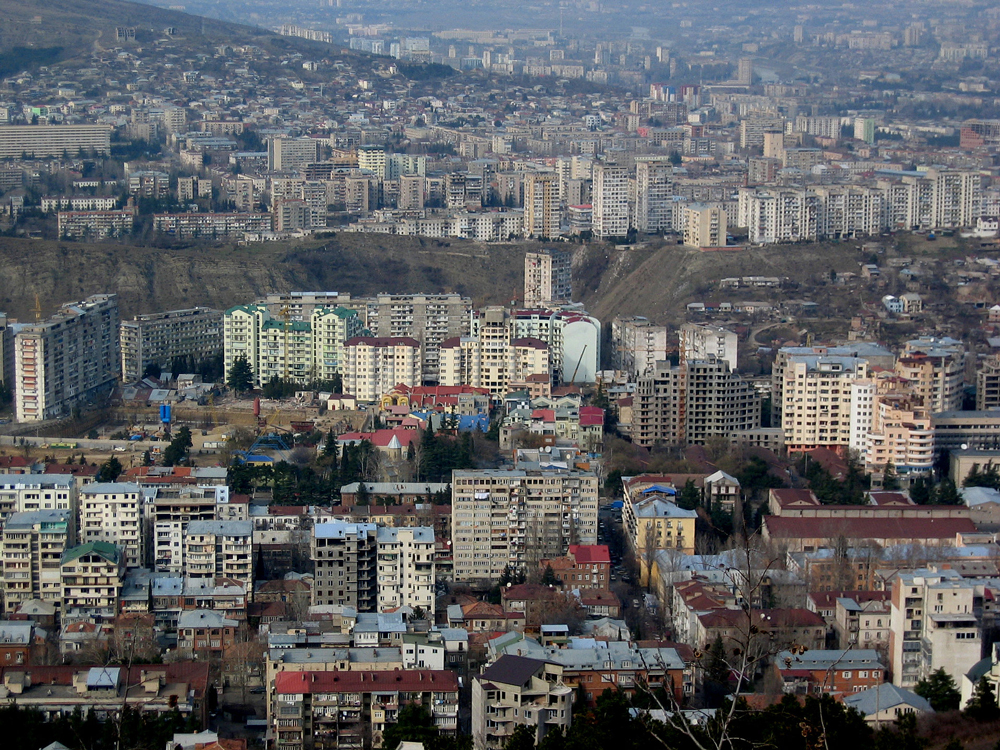
Image: Matt Bateman ‘Tbilisi scape’ CC BY 2.0
‘I really benefited from joining a tour, led by keen local architecture enthusiasts. Tbilisi is easy to navigate and there is an excellent transport network underpinned by the city’s memorable bright yellow buses.
‘a visit to the Kazbegi mountain region is a must’
For the intrepid explorer and a real change of scenery, a visit to the Kazbegi mountain region is a must. The drive will cost £50 (at the time of writing). It’s comparatively more expensive than taking the train (a Soviet-era train still functioning in a new age). However, it was well worth every penny. Our very able private-hire driver drove us into the mountainous Kazbegi region. With the patience of a saint, he accommodated plenty of pitstops en-route to explore vineyards, the Stalin Museum in Gori and the iconic Russia-Georgia Friendship Monument. We would complete the holy trinity of Georgia public transport by returning to Tbilisi for our last few days via Marshrutka, a shared minibus costing £7 each. Not to be missed for a slice of realism’.
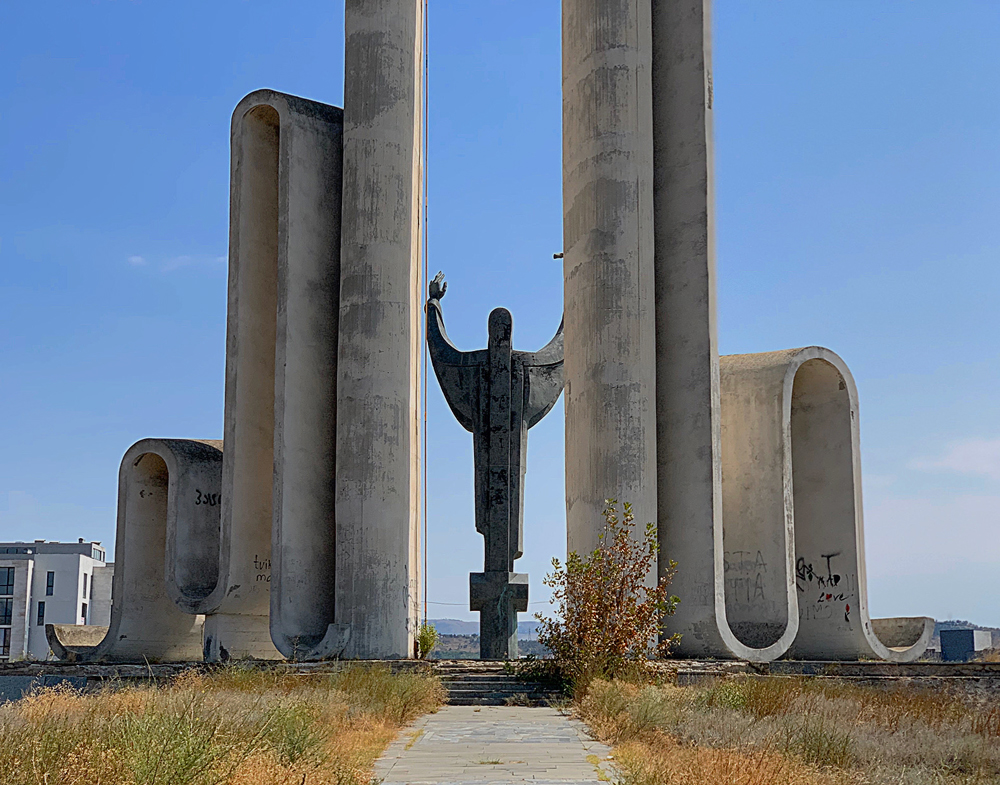
Monument to Saint Nino Image Dave Lowe
‘Georgian cuisine is renowned and combines a wealth of local regional dishes. Walnuts are frequently used. Dave’s favourite dish is the, to the point, named ‘Beans in Clay Pot’ aka Lobio’.
Lobio is made by stewing kidney beans in a traditional Georgian spice mix of fenugreek seeds, coriander seeds, chilli, ground marigold, garlic (quite a lot of garlic) and fresh coriander leaves. It’s typically served accompanied by cornflour flatbreads, pickles and sometimes local cheese.
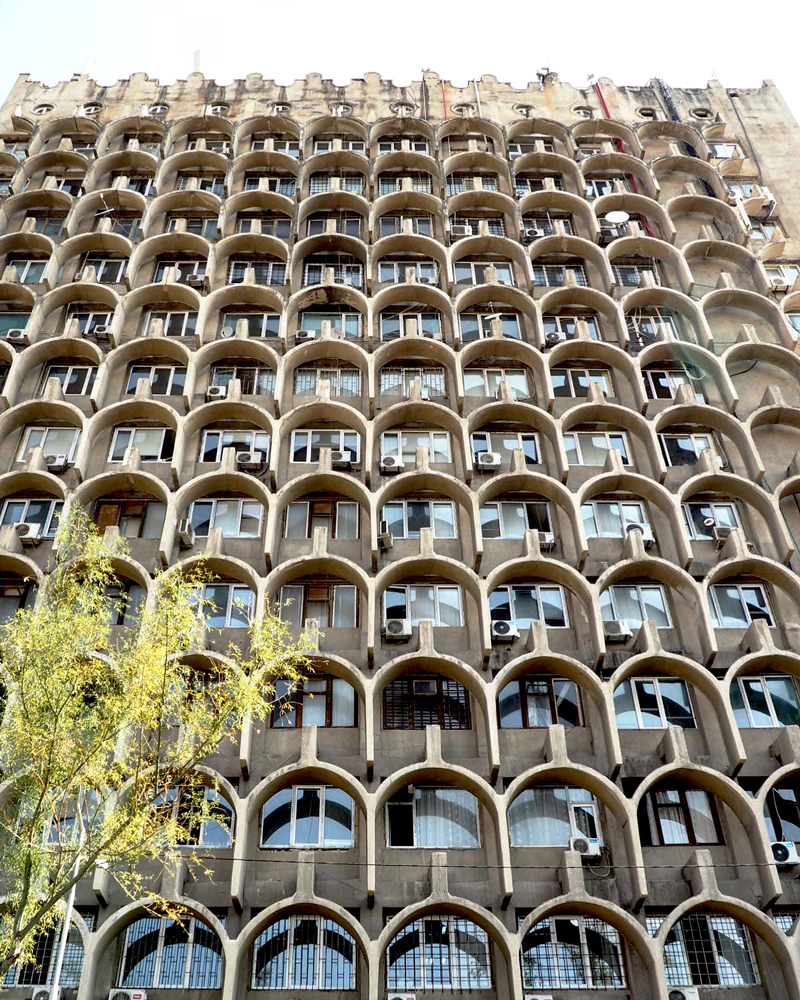
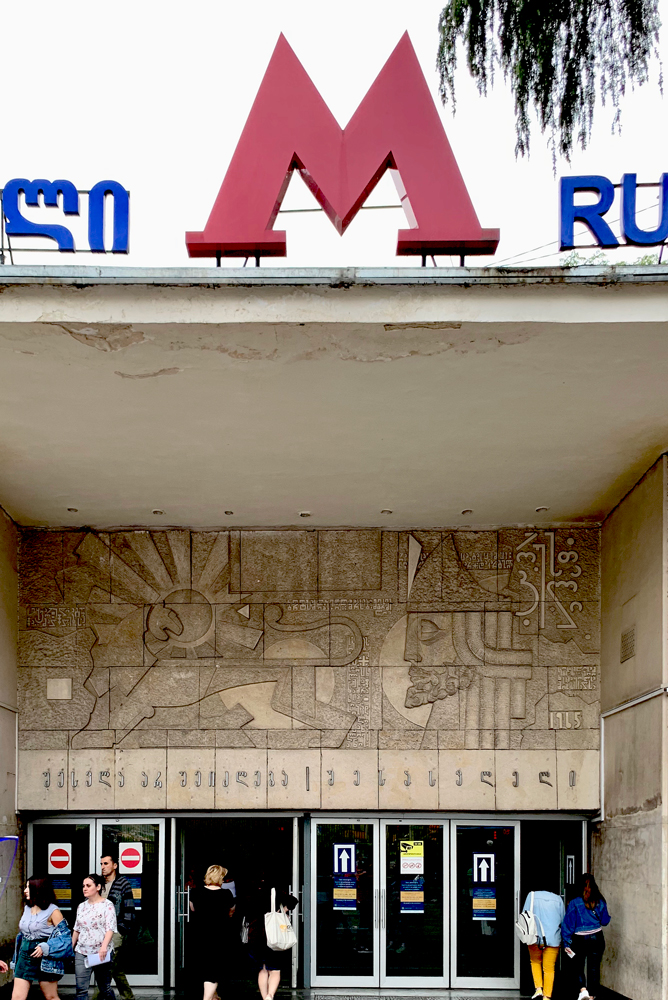
Images Dave Lowe
Useful stuff
Whilst you’re there, Dave recommends by way of an introduction to the country’s recent past, The Museum of Soviet Occupation. Marjanishvili Created out of the archives of the Georgian security services before the collapse of communism, today it is part of the National Museum of Georgia.
Dave used local tour guides from Brutal Tours and had a great experience with them!
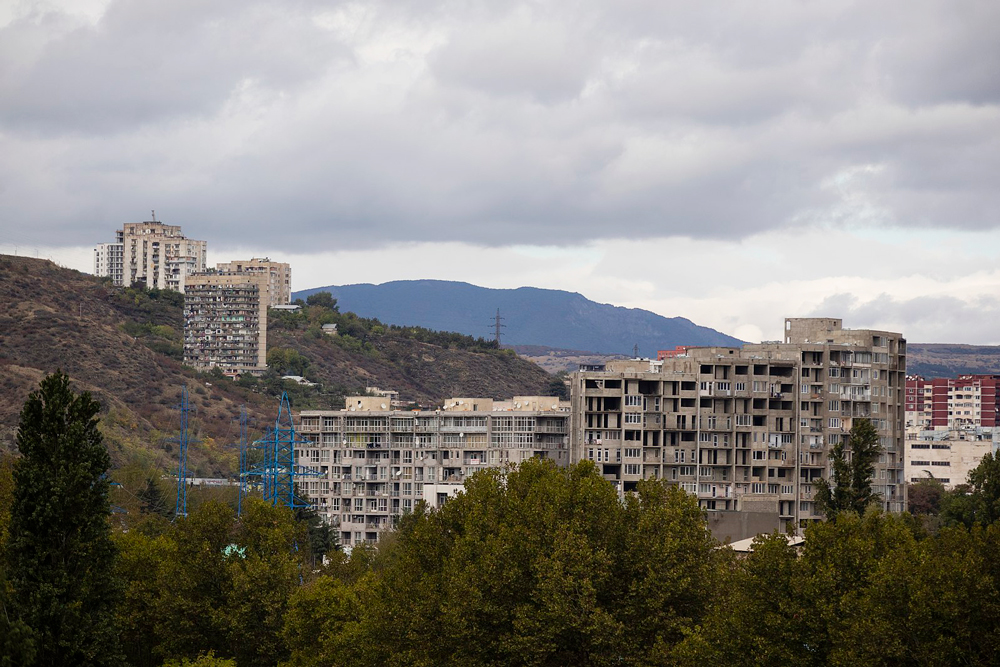
Image Mostafa Meraji CC BY SA 3.0
Off the béton track
Joseph Stalin Museum in Gori
Bank of Georgian HQ, formally the Ministry of Highway Construction
Stamba Hotel, located in a former Soviet printing house
Madam Bozarjiantz’s House in Tbilisi
The Writers House of Georgia
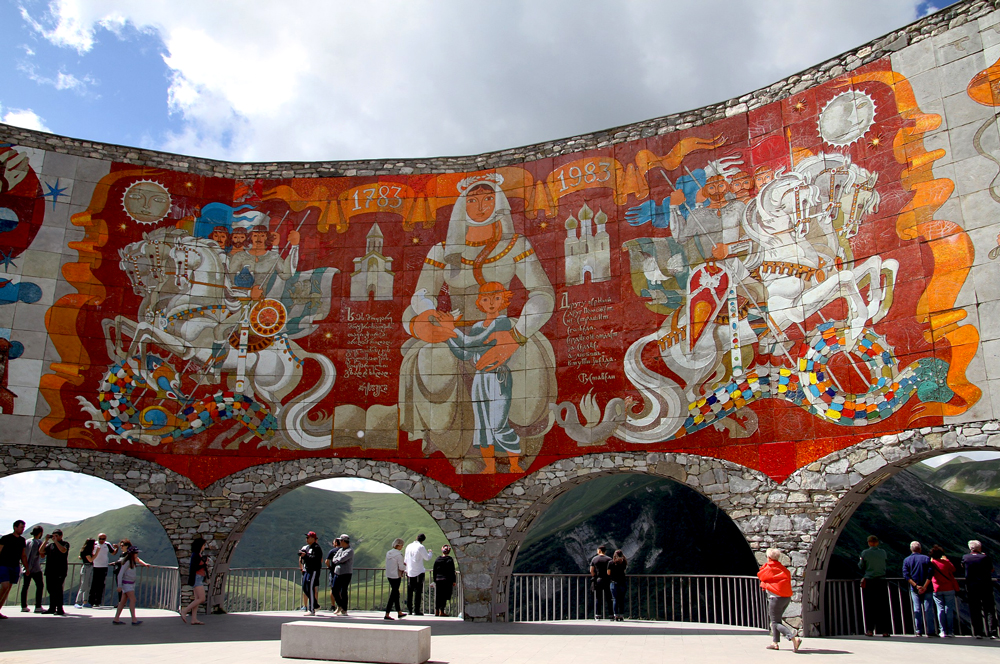
Treaty of Georgievsk monument Image Gerd Eichmann CC BY SA 4.0
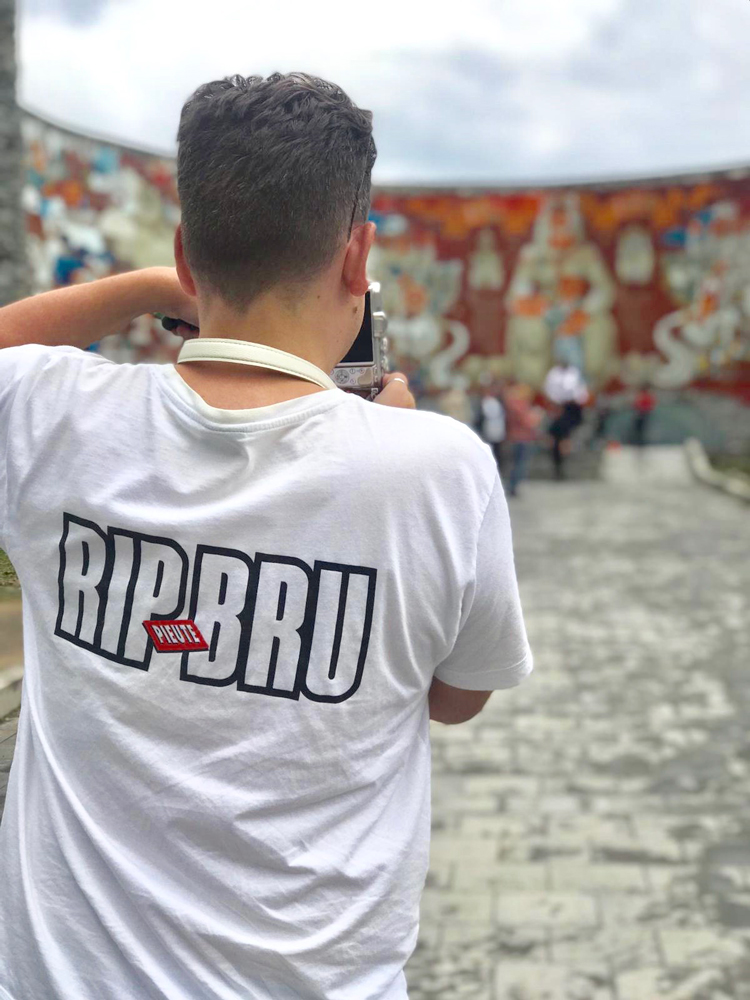
Dave at the Treaty of Georgievsk Monument!
Treaty of Georgievsk Monument
Abandoned Soviet spas in Tskaltubo
The Zestefoni Art School which was formerly known The House of Pioneers
Tiblisi Technical Library
The Tbilisi Wedding House
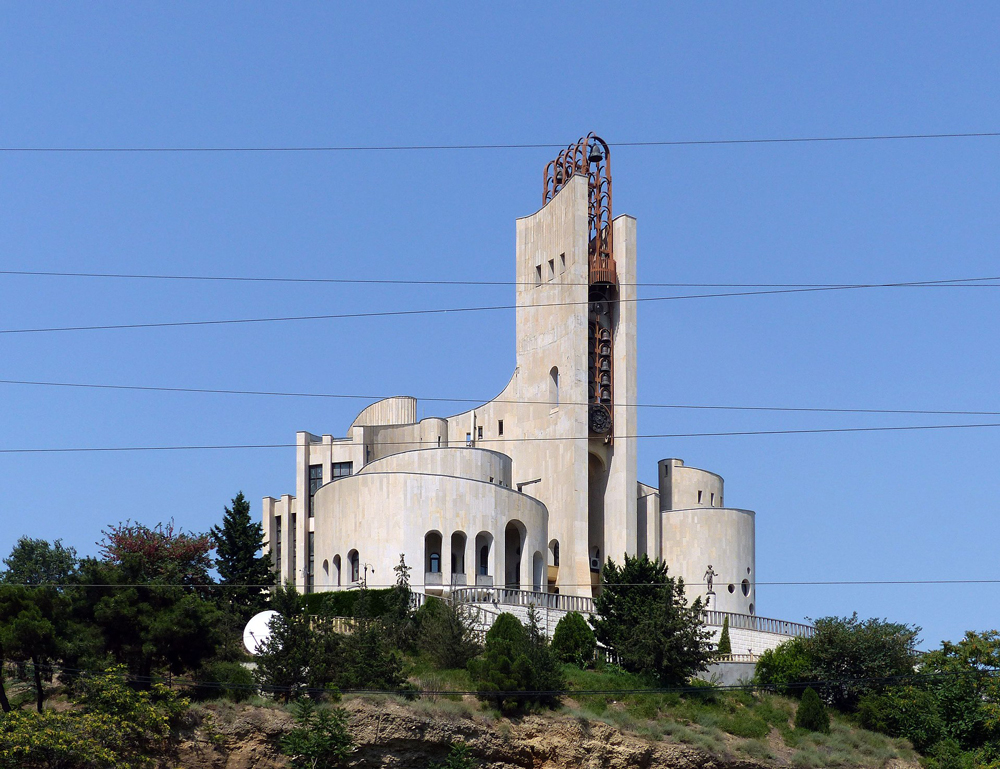
Tbilisi Wedding Hall Image Carl Ha CC BY SA 4.0
Finding Dave
On Twitter and Instagram @daveloweee
And the obvious question to ask a Scottish drum and pipe band drummer …. who should we be listening to?
Clyde Stubblefield, the legendary funky drummer and Alex Duthart, who has pioneered some original and exciting techniques.
All of David Lowes images ©
Images by other photographers are noted accordingly





